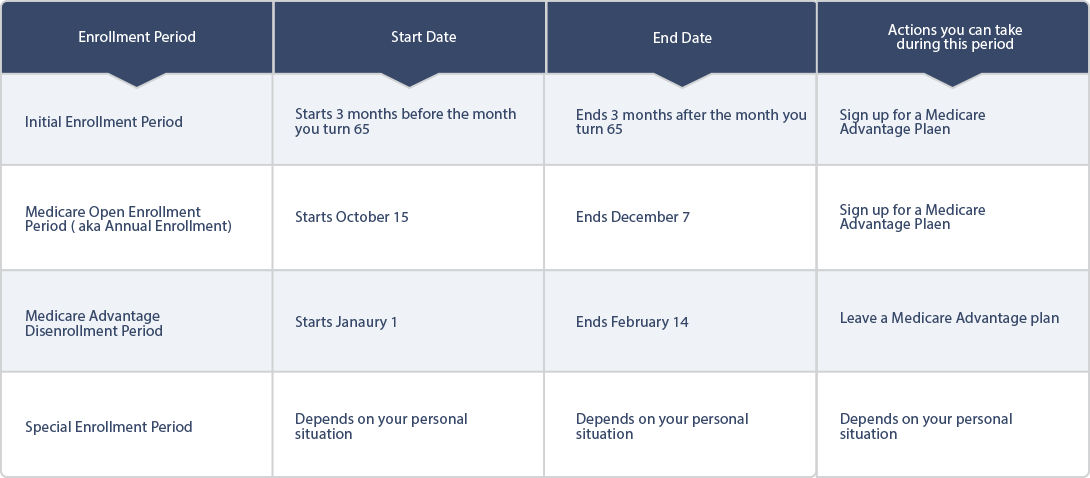Enrollment in Medicare Part D (Prescription Drug Coverage)
There are a few different options for receiving insurance coverage for your prescription drugs through Medicare. But what’s the best for you? The following outlines how to get enrolled in Medicare Part D and begin receiving the prescription drug benefits afforded to Medicare beneficiaries.
What Is Medicare Part D?
Medicare has multiple parts: through Original Medicare which provides hospital coverage (Part A) and medical coverage (Part B) or through Medicare Advantage, which combines Parts A, B and often D to give you hospital, medical and prescription drug coverage. In some cases, Medicare Advantage does not cover prescription medications.
Medicare Part A and Part B rarely cover medications. Part A will cover drugs you receive during a hospital stay, but not afterwards. Part B will provide coverage for some medications, but only those that you can’t take on your own — meaning you must visit a doctor’s office or medical facility to receive them. This means that neither part of Original Medicare will help defray the cost of prescriptions you may need on a daily basis or over-the-counter medications. This is where Medicare Part D steps in; it specifically is meant to help you obtain prescription drugs that may otherwise have been too costly.
Unlike Original Medicare (and similarl to Medicare Advantage), Part D is provided by private insurance companies. This means that you can pick and choose from different prescription medication plans, finding what best suits your medication needs and also your budget. Medicare Part D is voluntary, so you’re not forced to join if you don’t need prescription drug coverage. But because it is an opt-in plan, be prepared to pay a monthly premium.
How Do You Get Medicare Part D?
Like we mentioned before, there are multiple ways you can enroll for Part D benefits. They all depend on what kind of coverage you currently have, and how much you’re willing to spend. A Medicare Specialist at PolicyZip can help you determine which Medicare options are best for your specific needs. Call us at (844) 205-7510.
The first way to get Part D coverage is through Original Medicare, by simply choosing to add it on. Beyond paying for your Part B premium, you’ll also pay a premium for this new insurance plan. This same scenario is applicable for those that have Medicare Parts A and B along with a Medicare Supplement plan.
You can also received drug coverage by enrolling in a Medicare Advantage and Prescription Drug plan. Medicare Advantage plans combine Parts A, B and oftentimes D to give you one plan, often with additional benefits like vision, dental and hearing aid coverage. Switching to a Medicare Advantage plan gives you the option to shop around for different levels of coverage; the biggest perk is that, by law, you will still receive the same basic level of care as Original Medicare, but possibly spend less out-of-pocket on things you need, like glasses or medications.
Some forms of Medicare Advantage plans do not include prescription drug coverage. If this is your plan, you can likely still choose to opt-in to a Part D plan. Medicare Advantage plans are not required to offer prescription drug coverage, so you may find it wise to keep this fact in mind as you consider your coverage options.
Who Can Enroll in Part D Coverage?
There aren’t many eligibility requirements for Part D coverage, which means nearly anyone can qualify. To enroll, you must have both Medicare Part A and Part B. If you have these, or Medicare Advantage (with a plan that doesn’t offer prescription drug coverage) you’re halfway there. In addition, you can only select from prescription drug plans available in the area you live. Because medication costs can vary by region and insurance provider, it’s important that you choose one in your area for the most accurate costs and easiest access to getting your prescriptions. So long as you meet these two guidelines, you can have a Part D prescription coverage plan.
How Do I Enroll in a Part D Plan?
Because Medicare Part D is provided through private insurance companies, you can shop around to find a plan that best meets your needs and budget. Enrollment is as simple as contacting the insurance provider or working with a licensed insurance agency like PolicyZip who can help you determine which plans offer the best coverage options for your particular needs.
When to Enroll in Part D Coverage
When you initially enroll in Medicare, you have the option to also sign up for Part D coverage. Consider that a penalty may accrue for those that do not have any form of prescription drug coverage should you later choose to sign up for a Part D plan. Regardless of when you choose to add on prescription drug coverage, there are only three periods of time when you can enroll. You don not have to sign up for Medicare or Part D coverage each year, but there is a specific annual window to review or change your plan.
You can add on Part D coverage:
1) During your Initial Enrollment Period as you approach retirement, which begins three months prior to your 65th birthday and extends through three months after. This is the time you will also be able to enroll in Original Medicare or, possibly, a Medicare Advantage plan.
2) During annual enrollment periods, which take place at certain times of year. There are three options, depending on your situation and needs:
- Within Medicare General Enrollment, which begins January 1 and ends March 31. This time span is for people who have missed their Initial Enrollment Period.
- During Fall Enrollment (officially known as the Annual Coordinated Election Period), which runs from October 15 to December 7. This period allows you to make additions or adjustments to your Medicare coverage, and is a great time to review your plan and needs each year.
- There’s also the Medicare Advantage disenrollment period. This window of time from January 1 to February 14 gives you the chance to drop your Medicare Advantage plan and switch back to Original Medicare. If you choose to do this, you can also add on Part D coverage at the same time.
3) During a Special Enrollment Period, which varies from person to person and can happen at any time of year. This kind of enrollment window opens in situations such as becoming eligible for Medicaid, if you move, if you qualify for the Extra Help assistance program or if your current plan is no longer offered. You can also qualify for a Special Enrollment period if you are enrolled in both Medicare Part A and an employer’s health insurance, but leave that job and lose your coverage.




